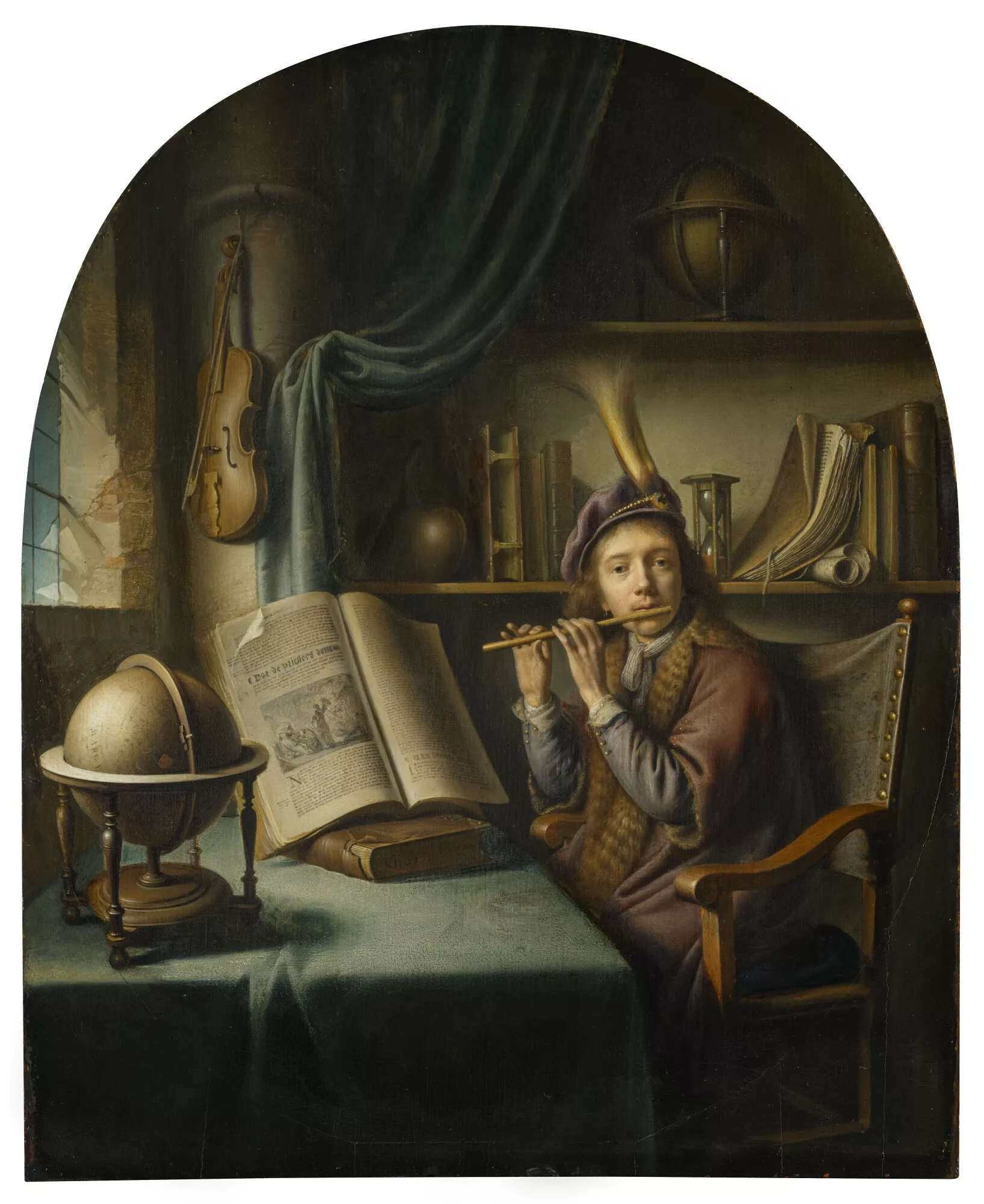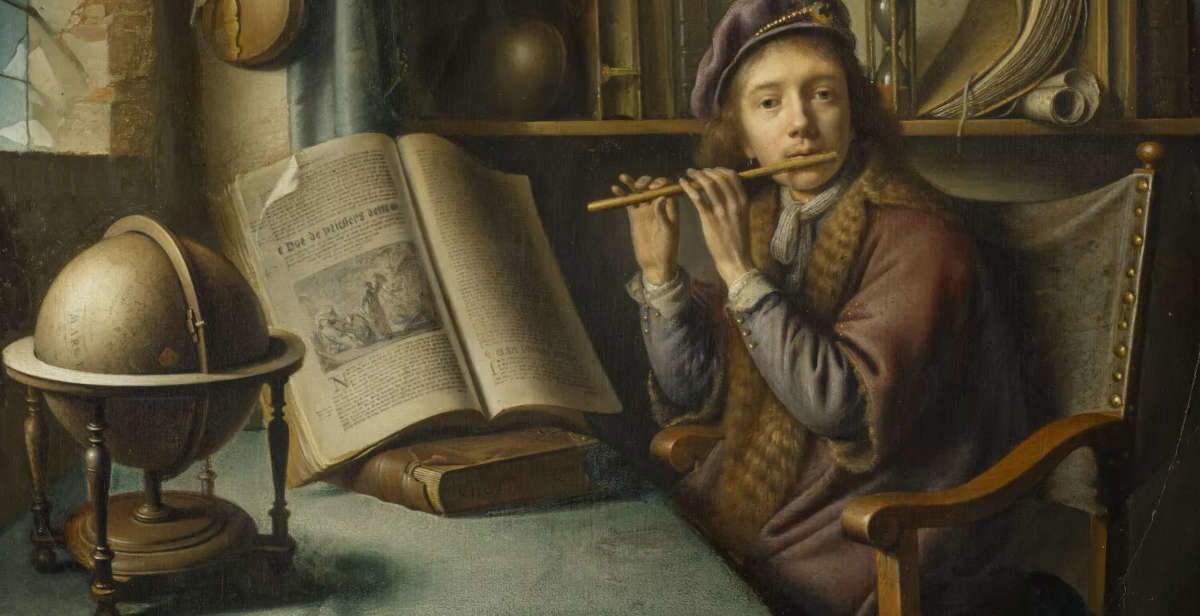Back on the market after more than a century is a rare masterpiece of the Dutch seventeenth century. The Flute Player, the first depiction of a musician painted by Gerrit Dou (Leiden, 1613 - 1675), will be the top lot in theOld Masters Evening Sale organized by Christie’ s on December 2 in London as part of Classic Week. The work, estimated at between £2 million and £3 million (€2.27 million to €3.41 million), represents one of the pinnacles of the early production of the artist, among the finest pupils of Rembrandt van Rijn and a leading figure of the Leiden School.
According to Maja Markovic, director of the Old Masters Evening Sale at Christie’s London, “Dou’s abiding interest in painting through the centuries is confirmed in this extraordinary work. Its appearance on the market for the first time in more than a hundred years offers a new generation of collectors the opportunity to acquire an early masterpiece by an artist whose technical mastery continues to enchant today as it did four centuries ago.”
The Flute Player is considered a vanitas, a painting laden with symbolism, in which music, knowledge and time become metaphors for the fragility of life. Dou, like Rembrandt, belonged to that generation of Dutch artists who transformed genre painting into a cultured and intellectual language capable of combining introspection, technical virtuosity and moral allegory. The work is distinguished by its extreme minuteness: the microscopic details and smooth, enamel-like surface erase all traces of brushwork, the result of a technique that required weeks of work for every inch of canvas.

The painting, made around the late 1730s, belongs to the period when Dou was defining his stylistic signature, characterized by delicate light rendering and an almost scientific approach to representation. With the Flute Player, the artist inaugurates the series of musical subjects that would recur throughout his career, positing the figure of the musician as an emblem of knowledge and ephemeral pleasure.
In the painting, a young flute player looks directly at the viewer, establishing a silent and intimate dialogue. The protagonist’s gaze, quiet but penetrating, is a hallmark of Dou, who often made his characters mirrors of contemplation and knowledge. Surrounding the musician, objects with symbolic value tell a universe of moral allusions: an hourglass, a viola, books, terrestrial and celestial globes, study instruments and art objects that refer to the passing of time and the precariousness of human ambitions.
This dialectic between intellect and sensuality, between knowledge and transience, found great resonance in 17th-century Leiden, a university and intellectual city where Dou lived and worked. The educated public of the time, consisting of scholars, collectors and merchants, recognized in these allegorical subjects a refined symbolic language, mirroring the Dutch humanistic mentality.
In addition to its iconographic value, the Flute Player represents a fundamental document of Dou’s career. It is in fact his first depiction of a musician-a theme that the artist would later take up in several variations, declining the player motif in an increasingly intimate and reflective key.
In terms of provenance, the work boasts an illustrious history. It remained in the same English collection for 125 years, having belonged to William Proby, fifth Earl of Carysfort (1836-1909), who kept it at Elton Hall, Cambridgeshire, around 1900. It has since passed by direct descent, never being offered on the public market. Its appearance at auction is therefore an exceptional event for collectors and scholars.
Gerrit Dou’s fame in the seventeenth century was comparable to that of the greatest Dutch masters. A pupil of Rembrandt and founder of the so-called “School of Leiden,” Dou was known for the maniacal precision of his technique and his ability to paint surfaces so smooth that they looked real. His mastery won him the favor of major European patrons, including Cosimo III de’ Medici, Archduke Leopold Wilhelm of Austria, and even King Charles II of England, to whom the Dutch government donated three of his paintings as a diplomatic gesture on his accession to the throne in 1660.
Dou was also held in very high esteem by the diplomat Pieter Spiering, the Swedish crown’s envoy to The Hague, who paid him an annual fee of five hundred guilders just to have the right of first refusal on his works. These figures testify to how highly the painter was appreciated even in his lifetime and how his production, limited in number and executive complexity, was reserved for patrons of the highest order.
Over the centuries, admiration for Dou has never waned. Nineteenth-century British and American collectors, attracted by the formal perfection and moral purity of his paintings, helped cement his international reputation. The Lute Player itself was considered an ideal example of his “jeweler’s” style, in which painting becomes a mirror of time and inner life.
In recent years, interest in Gerrit Dou and the minor Dutch masters of the seventeenth century has experienced renewed attention in the marketplace. Christie’s set a world auction record in 2023 for a work by the artist, with Young Woman with Hare and Boy at the Window, which sold for $7 million during the celebrated Rothschild Masterpieces sale. This achievement marked a turning point in Dou’s reappraisal, confirming him among the most sought-after protagonists of Dutch Baroque-era painting.
 |
| Gerrit Dou masterpiece back on the market after a century: for sale at Christie's |
Warning: the translation into English of the original Italian article was created using automatic tools. We undertake to review all articles, but we do not guarantee the total absence of inaccuracies in the translation due to the program. You can find the original by clicking on the ITA button. If you find any mistake,please contact us.